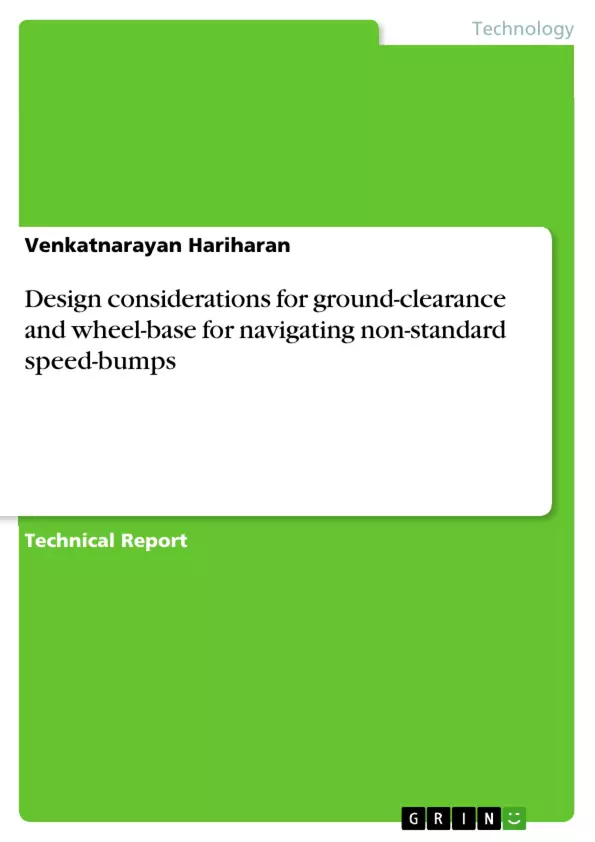In some countries, there is very little standardization in the construction of speed-bumps (aka. speed-breakers), as a result of which the bottom of many cars scrape the speed-bumps. In this paper, we come up with a first order figure of merit that car manufacturers can use when adapting their cars to be sold in such countries, so as to minimize the chances of scraping the speed-bumps.
Table of Contents
- Introduction
- Model
- Model Formulation
Objectives and Key Themes
This paper aims to develop a first-order model for assessing a car's susceptibility to scraping speed-bumps, taking into account both ground clearance and wheelbase. This model can be used by car manufacturers to optimize their designs for sale in countries with non-standardized speed-bumps, and by car buyers to compare different models in terms of scrape resistance.
- Non-standardization of speed-bumps in developing countries
- Importance of ground clearance and wheelbase for scrape susceptibility
- Development of a model to assess scrape susceptibility
- Impact of speed-bump length on scrape resistance
- Trade-off between ground clearance and vehicle dynamics
Chapter Summaries
Introduction
The paper highlights the problem of non-standardized speed-bumps in some developing countries, leading to cars frequently scraping their bottoms. The author outlines the need for a model to assess scrape susceptibility, benefiting both car manufacturers and buyers.
Model
The chapter introduces a simplified model for scrape susceptibility based on an isosceles triangular speed-bump profile. The author explains the concept of scrape resistance based on ground clearance and wheelbase, considering scenarios where the speed-bump is longer than the wheelbase.
Model Formulation
The chapter presents a detailed mathematical formulation of the model, utilizing geometrical principles to derive equations for calculating scrape susceptibility. The author analyzes the position of the vehicle as the rear wheels approach the speed-bump, considering factors like angle of approach, ground clearance, and wheelbase.
Keywords
The key focus of this paper is on the design considerations for ground clearance and wheelbase to minimize the chances of scraping speed bumps. The paper develops a model that takes into account the interplay between these two parameters and applies it to a simplified, isosceles triangular profile of speed-bumps. Important themes include non-standard speed-bumps, scrape susceptibility, vehicle dynamics, and model formulation.
- Citar trabajo
- Venkatnarayan Hariharan (Autor), 2017, Design considerations for ground-clearance and wheel-base for navigating non-standard speed-bumps, Múnich, GRIN Verlag, https://www.grin.com/document/358591



